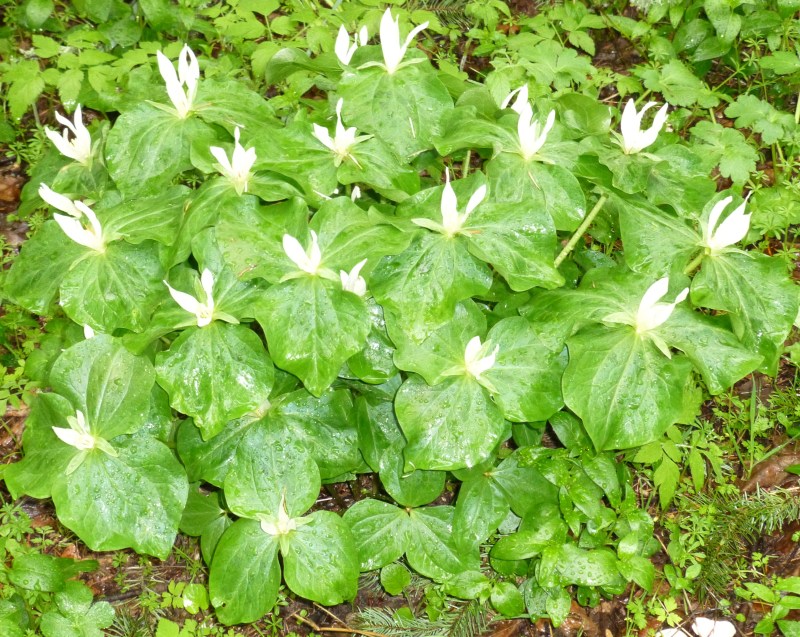By Madronna Holden
Update 4.23.2015
Monsanto is currently being sued for false advertising for claiming that glyphosate, the active ingredient in Roundup, is safe.
Protecting our Children’s Future
Yesterday a kind neighbor stopped by to praise my garden in this wonderful blooming time of year. We got on the topic of dandelions and she eagerly shared how her children blew out their puffy white seeds to wish on.
Wishing on dandelion seeds is a tradition around the world linked not only to the visual delight in seeing those seeds drift—but the fact that the dandelion root is medicinal, helping to clean toxins out of our bodies. We have got things backwards when we spray poisons on these plants.
Dandelions also provide essential forage for the bees that pollinate our crops—and greens in early spring.
Indeed, as I pondered the image of the children sending their innocent wishes out on dandelion seeds, I thought about the way that poisoning those seeds may be poisoning our children’s wishes for the future in more ways than one.
Liver and Kidney Damage and Cancer
With the recent World Health Organization declaration that glyphosate (Round Up’s main ingredient) is a probable carcinogen and the recent re-publication, after a second round of stringent peer review, of the Seralini study indicating that ingesting both Roundup and a variety of Roundup Ready seed lead to “very significant chronic kidney deficiencies” and liver damage, it is time to take this chemical off the market.
Notably, the mice in the Seralini study that ingested Roundup’s glyphosate not only died earlier than the control group, but at a two to threefold rate. This two year study replicated Monsanto’s 90 day study for licensing of glyphosate, and Seralini argues that a 90 day trial was simply not long enough for the effects of Roundup to show up—although even the Monsanto study shows indications of the damage to come, which Monsanto labeled “insignificant.”
Further, though Seralini’s study was not specifically geared to test for cancer, the number of tumors in the mice fed both the gmo corn and Roundup alerted the researchers to the need for further investigation on this score.
This kidney and liver damage in all the treated groups is implicated in the epidemic of deaths among agricultural workers in Central America and Asia who work in Roundup Ready fields. They are dying of dehydration from kidney failure—often in their twenties. Following these deaths, Sri Lanka briefly banned Roundup, though they rescinded that ban under pressure from herbicide manufacturers.
2-4 D – a central ingredient in the innocuous sounding Weed and Feed, has its own serious health repercussions—which motivated a doctors’ panel in Quebec to urge the local government to ban it, following its ban in a number of European countries.
The last thing the US needs is “Enlist” seed genetically engineered to be resistant to both Roundup and 2-4-D, leading to the inevitable higher level of both these herbicides in our food.
The Addictive Process
Though Monsanto denounces the studies cited by the WHO as “inconclusive”, it doesn’t argue with one of Roundup’s inevitable results—the development of herbicide-resistant weeds. Indeed, this resistance is Dow’s argument for the certification of its Enlist seed. This is good for Monsanto and Dow’s profits—and bad for feeding the world.
Notably, this is the same process that helped big tobacco addict younger and younger smokers while more data came in regarding the harms of tobacco—until the facts were finally indisputable.
In this meantime, the burden of proof of such dangers must be financed by the public—or enterprising scientists such as those on Seralini’s team– rather than those who profit by the manufacture and sale of these chemicals. Big tobacco is finally being held accountable for its health harms on the basis of its foreknowledge of tobacco’s addictive qualities.
We might well hold Monsanto and Dow to the same standards.
Farmers now reliant on Roundup face an expensive dilemma. They need more and more of the chemicals to accomplish the same result.
The only effective cure for dependence on these toxic chemicals is stopping their use.
Banning chemicals with known or suspected toxicity will cause the agricultural industry to get smarter as well as more efficient. A switch from such toxic chemical usage will not be easy—or instant– but this is the only approach that removes the farmer from the merry-go-round of expensive chemical addiction—and removes exposure to these toxins from our homes and families as well.
Some smart farmers have already seen the handwriting on the wall. They are using such things as crop rotation and mechanical weeding to wean themselves off herbicides. The words of one such farmer turning to organic agriculture in California’s Central Valley after his son contracted cancer are haunting, “What should I tell my son—that my profits were more important?”
Human Guinea Pigs
Since Ronald Reagan ordered the labs at the US Environmental Protection Agency dismantled, the EPA has had no ability to test any products it approves or to verify research industry submits.
Indeed, the EPA operates on the principle that unless a chemical is proven harmful, it should be allowed. This means the real test of such chemicals comes after their release—when their harms on humans and other lives shows up. Thus natural lives become guinea pigs.
And it takes often takes many decades for the results to come in—as in the case of DDT. The smarter and safer standards is that of the precautionary principle used by many developed countries, which states that something should be proved harmless before it is released into the environment.
Meanwhile, the very fact that the EPA exists lulls the US consumer into thinking that whatever is sold here has been tested safe, as evidenced by the overwhelming springtime displays of pesticides in local garden stores. Indeed, household use counts for substantial chemical usage in the US.
Whereas agricultural workers and licensed pesticide applicators must follow label instructions or be fined, home applicators have no such restrictions–unless your next door neighbor complains about drift and (in Oregon at least) is economically damaged by it.
Our laws don’t compensate for “chemical trespass”, but I would rather have someone walk through my yard than spray Roundup that drifts onto my yard. Roundup’s carrier chemical—which allows glyphosate to penetrate living tissue and is in some respects more dangerous than glyphosate itself—may remain invisible and active for 42 days before it even breaks down halfway.[i]
The Destruction of Beneficials
Board spectrum herbicides like Roundup destroy plants that are the food sources of beneficial insects. This exaggerates crop losses from insects—despite growing chemical usage Today US agriculture suffers more crop loss from pests (weeds and insects and disease) than it did before agricultural chemical usage began in earnest in the 1950s.
What can we do to protect our families’ health?
We can refuse to buy Monsanto’s genetically engineered foods.
We can refuse to use Roundup or 2-4 D (or the Weed and Feed containing it) on our yards and home gardens.
We can support organic agriculture.
We can lobby for banning these dangerous chemicals– and certainly, for prohibiting their use on school grounds and parks where children play.
We can add our voices to those working to reform the US Toxics law, so that health and good science are not compromised by profit.
We can utilize the resources concerning alternatives to pesticide use offered by the Pesticide Action Network and the Northwest Coalition for Alternatives to Pesticides.
And about those weeds…
If we can’t tolerate certain weeds, here is advice from the Eugene Stormwater Department:
- Let sleeping seeds lie. Digging and cultivating brings weed seeds to the surface.
2. Mulch. Don’t give weeds the chance to see light.
3. Weed early and often. Young weeds pull easier than older ones.
4. Off with their heads? If you can’t yank ’em out, then deadhead before they go to seed. - Boil or broil. Heat kills weeds and seeds. Boiling water or a torch (carefully applied) blasts them in sidewalks and driveways.
- Space your plants closely. Planting tightly shades the soil between emerging weeds.
[i] J. Giesy, S. Dobson and K. Solomon, “Ecological Risk Assessment for Roundup Herbicide”, in Reviews of Envrionmental Contamination and Toxicology, ed. G. Ware, v. 167.
Filed under: Health | Tagged: alternatives to herbicides, herbicide resistance, Monsanto false advertising, precautionary principle, Roundup and cancer, Roundup dangers, Roundup kidney failure, Roundup liver damage, Seralini gmo study |








































Leave a comment